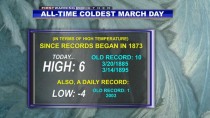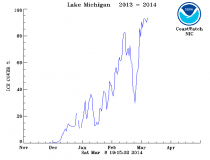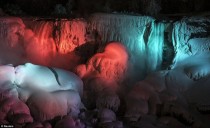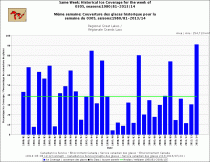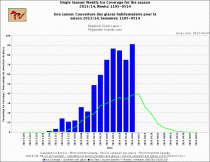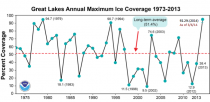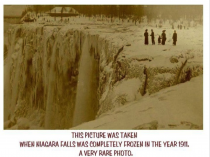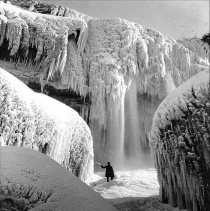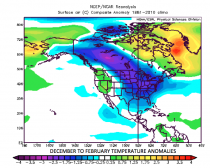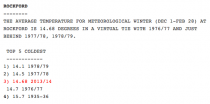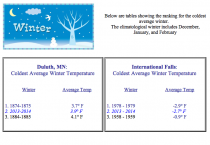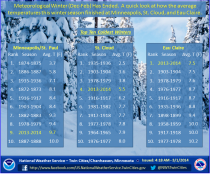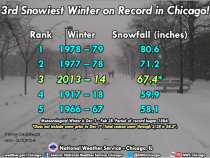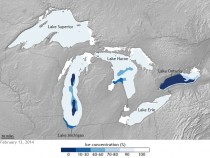Two major multi-volume reports on global warming were released in 2013 and so far in 2014, one by the United Nations’ Intergovernmental Panel on Climate Change (IPCC) and one by the Nongovernmental International Panel on Climate Change (NIPCC).
NIPCC is an international network of some 50 independent scientists from 15 countries, many of them distinguished and with no financial stake in the debate. Their new report consists of two volumes, each approximately 1,000 pages long, together citing nearly 6,000 peer-reviewed studies.
Here is what the scientists found:
# There is no scientific consensus on the human role in climate change.
# Future warming due to human greenhouse gases will likely be much less than IPCC forecasts.
# Carbon dioxide has not caused weather to become more extreme, polar ice and sea ice to melt, or sea level rise to accelerate. These were all false alarms.
# The likely benefits of man-made global warming exceed the likely costs. Here is what this means for public policy:
# Global warming is not a crisis. The threat was exaggerated.
# There is no need to reduce carbon dioxide emissions and no point in attempting to do so.
# It’s time to repeal unnecessary and expensive policies.
# Future policies should aim at fostering economic growth to adapt to natural climate change.
What about those who still say global warming is a crisis?
# The UN’s new report walks back nearly a dozen earlier claims, contains more than a dozen errors, and tries to cover up new discoveries that contradict its earlier claims.
# The Environmental Protection Agency (EPA) relies heavily on the UN’s reports for its finding that carbon dioxide is a pollutant. That finding is now falsified.
# Environmental groups refuse to admit they were wrong. It was never about the science for them.
For more information, visit http://www.climatechangereconsidered.org or http://www.nipccreport.org.
Lovejoy is from the once great McGill University in Canada.
Ironically, Canada is having one of its most brutal and long lasting winters on record much like the North Central States. Great lakes ice three weeks into April and more than half way through spring, is still covering 39.9% of the lakes, more than 2000% of the long term average.
The ice on Superior is likely to linger well into May as well as the snow in southern Canada.
-------------
Friends of Science
A recent paper published by Shaun Lovejoy of McGill University, that claims 99.9% certainty of Anthropogenic Global Warming, is flawed from the outset, according to Friends of Science due to Lovejoy’s omission of known climatic variations and reliance on the discredited “Hockey Stick” graph.
Natural warming and cooling periods of climate change appear to be cyclical based on Greenland ice cores
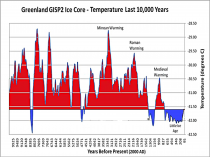
Greenland GISP2 Ice Core - Temperature Last 10,000 years
All three warm periods occurred before industrialization; these facts effectively put Lovejoy’s argument of ‘unprecedented global warming’ to rest from the get-go
Calgary, Alberta, Canada (PRWEB) April 17, 2014
Friends of Science are rejecting the recent paper by Shaun Lovejoy of McGill University of Montreal reported on April 11, 2014 in the online science news Phys.org and published April 6, 2014 online in the journal Climate Dynamics. The Lovejoy paper claims to prove with 99.9% certainty that human industrial activity is the cause of recent warming (which stopped naturally 15+ years ago as reported May 26, 2013 in Forbes). However, assessment by Friends of Science member and geophysicist Norm Kalmanovitch, reveals the paper lacks reference to known past historical warm periods. This means Lovejoy’s conclusions are 100% wrong, say Friends of Science.
“The Lovejoy paper is fundamentally flawed in that it fails to take account of three known prior naturally warm periods and it relies on the widely discredited “Hockey Stick” graph and replications that were dismantled by McKitrick and McIntyre years ago,” says Kalmanovitch.
Friends of Science dispute Lovejoy’s methodology saying his simplistic correlation between CO2 and proxy temperatures as causing warming, fails to address the increase of solar activity, the source of all energy on earth, in the time period. Tree-ring data used in Lovejoy’s study diverges greatly from thermometer measurements, indicating that the proxies are not reliable for estimating past temperatures.
Kalmanovitch points to the earlier warming periods, Minoan Warm of 3,000 years ago, Roman Optimum of 2,000 years ago, and Medieval Warm of 1,000 years ago.
A graph published in the Journal of Quaternary Science Reviews of January 2000: pp 213-226 shows that all three periods were all warmer than the current warm period.
“All three warm periods occurred before industrialization; these facts effectively put Lovejoy’s argument of ‘unprecedented global warming’ to rest from the get-go,” says Kalmanovitch.
Evidence from satellites and radiosondes show that climate is not very sensitive to changes in CO2 due to net negative feedbacks operating in the climate system, which counteract the direct CO2 effect. The lack of warming over the past 15+ years proves that natural factors can easily negate the small CO2 effect.
Lovejoy’s paper begins the study period in the 1500’s but he does not reference known temperature records within that time. The Central England Temperature Record from January 1663-December 1762, before the Industrial Revolution shows a warming of 0.90C during this 100 year period. Humans were not responsible for this temperature change.
As reported in the Wall Street Journal of Feb. 19, 2014, the global temperature rise over the last 100 years was only about 0.7 C [1.3F], which was mostly due to natural causes, with humans having a small effect.
Other concerns are evidenced in the original press release issued by McGill University wherein Shaun Lovejoy is quoted as saying: “This study will be a blow to any remaining climate-change deniers...”
“This is appalling language, sanctioned by a Nobel Laureate University like McGill, unscientific and in very poor taste,” says Kalmanovitch.
Friends of Science are asking McGill University’s Chancellor for a retraction and apology for the language used in the press release. Friends of Science have spent a decade reviewing a broad spectrum of literature on climate change and have concluded the sun is the main driver of climate change, not carbon dioxide (CO2). The core group of the Friends of Science is made up of retired earth and atmospheric scientists.
Contact:
Friends of Science Society
P.O. Box 23167, Connaught P.O.
Calgary, Alberta Canada T2S 3B1
Toll-free Telephone: 1-888-789-9597
Web: friendsofscience.org
E-mail: contact(at)friendsofscience.org
Matt Briggs adds his comments on the Lovejoy claims here.
Lovejoy Update
To show you how low climatological discourse has sunk, in the new paper in Climate Dynamics Shaun Lovejoy (a name which we are now entitled to doubt) wrote out a trivially simple model of global temperature change and after which inserted the parenthetical words “skeptics may be assured that this hypothesis will be tested and indeed quantified in the following analysis”. In published comments he also fixated on the word “deniers.” If there is anybody left who says climate science is no different than politics, raise his hand. Anybody? Anybody?
His model, which is frankly absurd, is to say the change in global temperatures is a straight linear combination of the change in “anthropogenic contributions” to temperature plus the change in “natural variability” of temperature plus the change in “measurement error” of temperature. (Hilariously, he claims measurement error is of the order +/- 0.03 degrees Celsius; yes, three-hundredths of a degree: I despair, I despair.)
His conclusion is to “reject”, at the gosh-oh-gee level of 99.9%, that the change of “anthropogenic contributions” to temperature is 0.
Can you see it? The gross error, I mean. His model assumes the changes in “anthropogenic contributions? to temperature and then he had to supply those changes via the data he used (fossil fuel use was implanted as a proxy for actual temperature change; I weep, I weep). Was there thus any chance of rejecting the data he added as “non-significant”?
Is there any proof that his model is a useful representation of the actual atmosphere? None at all. But, hey, I may be wrong. I therefore challenge Lovejoy to use his model to predict future temperatures. If it’s any good, it will be able to skillfully do so. I’m willing to bet good money it can’t.
Joseph D’Aleo
CCM
_thumb.jpeg)
December to March temperature anomalies

Enlarged
The Upper Midwest was hardest hit. It was the third coldest on record there all the way down to Chicago.
This continued the downtrend in winter (December to February and even December to March) temperatures for the nation, all the climate regions and the Upper Midwest for the last 20 YEARS!
It was the snowiest winter on record in parts of the Midwest like Detroit and third snowiest in Chicago (just 0.3 inches behind 1977/78) and second snowiest as far east as Philadelphia. It was top ten snowiest in many central and eastern cities.
March continue the cold from the Great Lakes to the northeast. Vermont deep in snow had their coldest March on record. In New Hampshire and Maine it was the second coldest, New York and Michigan 5th coldest.
Ice on the Great Lakes past mid april is still widespread, most on record so late.
It is running 1600% of normal for this time of the spring.
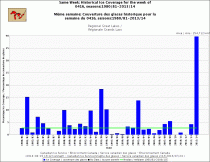
Enlarged
Just imagine if NCDC was not manipulating data where the wintr might have ranked. here is the adjustment from raw to final according to Steve Goddard.
By Dr. Roy Spencer
One of the most annoying things about climate forecasts is the apparent need to predict catastrophe.
Of course, it makes good press, like the latest from Bryan Walsh at Time, Climate Change Could Cause the Next Great Famine.
While such theories can always find a home with some learned academics, for those who ‘do’ rather than ‘teach’, the world is a very different place.
For the last 4 years, I have spoken at a Kansas City conference of grain growing and investment interests organized by The ProExporter Network, a company which tracks and predicts both U.S. and international grain markets and growing conditions, especially for corn, soybeans, and wheat.
I was with these folks again last week, and from what I hear, there have been no negative climate-related changes which have been identified. If they do exist, they are swamped by technological improvements...and maybe even the positive effects of CO2 fertilization (which has somewhat conflicting research results for maize).
Here in the U.S, as well as globally, grain production as well as yields (in bushels per acre) have been on an upward linear trend for at least 50 years, primarily due to improvements in varieties (e.g. with greater drought tolerance) and growing practices:
Most year-to-year interruptions in normal growing weather are due to heat waves and droughts, or less frequently, floods. High corn yields are favored by a warm spring with dry planting weather, a not-too-hot summer with sufficient rain (the most important growing period), and a warm, dry fall.
If we examine observed summer (June/July/August) temperatures over the corn belt, we see no obvious warming in the USHCN data. This is in stark contrast to the average of 42 climate models available through the KNMI Climate Explorer for approximately the same region as the corn belt:
Needless to say, the average model expectation of warming has not materialized in the corn belt. The corresponding average precipitation change in the models (not shown) has a near-zero trend for the corn belt, while there has been maybe a 10% increase in observed precipitation over the last 100 years, largely due to the Dust Bowl days early in the record.
The IPCC claims there is a negative impact of global warming on corn, but the experts I have talked to say there is no way to get that out of the data. You would have to have accurate quantitative knowledge of the technological trend, which you don’t.
In other words, without an accurate removal of the factors leading to the huge increase in corn yield (which is not possible), you can’t back out of the data any kind of climate-related signal. (If anything, the face-value evidence is that warming leads to higher yields, not lower.)
And without that accurate quantitative knowledge (and no evidence of observed corn belt climate change anyway), they tell me there is little reason to depart from a forecast of slowly increasing corn yields in the coming years.
So, unless you are an academic who is trying to remain relevant to the real world by forecasting doom and asking for government grants to support your Malthusian view of the world (wherein population increases exponentially and food production remains more constant), the real world scenario is that population will level off in the next 50 years, while grain production and yields will likely continue to grow, at least for the foreseeable future.
By Joseph D’Aleo, CCM
I together with Art Horn have done a series of videos here on local cable TV access channels trying to inject some reality into the dialogue on climate change and energy. The universities and the legislature has been totally corrupted or taken over by environmental activists posing as scientists and representatives mainly from the Union of Concerned Scientists. They teach the children and advocate policy based on the belief that their models are trustworthy and warming and sea level rise are accelerating and that unless we act quickly snow, so important to the ski and maple sugar industry would vanish from the northeast and tourism, industry and recreation would suffer. They push renewables especially wind which has been tried and failed in Europe.
Would you believe this winter they again testified in front of the Science, Technology and Energy Committee about the threat. The first tim they had a major releases in 2007, the winter that followed had the most snow in history across central and northern New England and the best ski season on record. They did the same last January before the February and March super snows and again early this winter. They claim our climate will become more like North Carolina by 2100.
Ironically, the cooling for the last 20 years in the northeast has been 1.2F, which if extrapolated would be 6F colder and more like Quebec.
We are not going to take it lying down. We are starting a series of bi weekly stories in weekly newspapers and editorials. Here is one this morning in southern New Hampshire towns.
WEATHER WHYS AND CLIMATE WISE
As a co-founder of The Weather Channel and its first Director of Meteorology back in 1982, I have over 40 years of experience in professional meteorology. That includes 20 years as Chief Meteorologist at Weather Services International Corporation. Since 2011 my main focus has been as Chief Meteorologist for Weatherbell Analytics LLC.
As a college professor at Lyndon State College I helped establish the Meteorology program while also inaugurating the Northeast Storm Conference, now in its 39th year. In addition to being a Certified Consultant Meteorologist and Fellow of the American Meteorologist Society I am an author, speaker and contributor on the topic of weather and climate. I have also testified on the topic before federal and state legislatures and took the science lead on legal briefs to the DC circuit and US Supreme courts.
A Hudson resident for the last 25 years, I will be contributing regular stories on weather and energy issues of concern to New Hampshire residents in general and HLN readers in particular. I will provide information you probably won’t read in the mainstream media.
There are unreported changes underway in the climate and politics on a national and state level that will have a major impact on your family’s economic future you need to be aware of. I have always considered myself an environmentalist and conservationist but the environmental organizations and our universities have been taken over by radical elements that do not have your best interests in mind.
As co-founder of Greenpeace and a PhD Ecologist Patrick Moore told the US senate, “It is a powerful convergence of interests among a very large number of elites, including politicians who want to make it seem as though they’re saving the world, environmentalists who want to raise money and get control over very large issues like our entire energy policy, media, for sensationalism, Universities and professors for grants. You can’t hardly get a science grant these days without saying it has something to do with climate change.
It is a kind of nasty combination of extreme political ideology and a religious cult all rolled into one, and it’s taken over way too much of our thought process and way too much of our priorities.”
I will prove that to you with climate facts, their own words and published plans. I will also mix in interesting climate facts about recent seasons and forecast the upcoming seasons. For example did you know the last 20 years, winter temperatures in all 9 US climate regions has declined (an average of 2.26F for the US). Here in the northeast winters have cooled 1.2F. This past winter was the coldest ever in many north central locations and even the 3rd coldest since 1879 in Chicago. Joe Bastardi and I at Weatherbell forecast this downtrend many years ago and this particular memorable cold and snowy winter many months in advance for our 3600 clients based on the same factors that drive the longer term climate cycles.
Instead of our climate becoming more like South Carolina, the trends would argue (and we will give physical reasons why in the next report), we will become more like Quebec.
Global temperatures have not warmed for going on 18 years even as CO2 increased 12%. Sea level rises have dropped in half globally to just 4 inches per century. Global hurricane activity is at a 30+ year low. Sandy produced devastation but it was barely a CAT 1 storm on landfall. We had 8 major hurricanes hit the east coast from 1938 to 1960.There were 142 fewer tornadoes in 2013 than any year on record and despite two big fires made worse by environmental pushback on thinning and brush removal, the number of wildfires was the lowest since reliable records began in 1984. We are told we are seeing rapid increases in heat records, but the state all time heat records tell another story. 23 of the 50 occurred in the 1930s, 38 before 1960 and there have been more all-time cold records than heat records since the 1940s.
The only phenomena that has increased is the one that NOAA, the IPCC and Union of Concerned Scientists (really environmental activists) that now occupy our universities said would vanish....snow. In 2007, 2012 and again early this year, they advised the ski and maple sugar industries and our legislature that the ski and sugar industry would die here. 2007/08 broke records for the most snow in northern and central New England. Last year we had the super blizzards of February and March and this year is well above normal here and ranking in the top 10 in most cities from the east to Midwest and even for several locations from Philadelphia west to Chicago converging on #1. For the hemisphere 4 of the 5 highest snow cover years have occurred in the last 6 years.
But instead of admitting to their mistakes (and I have just presented the tip if the iceberg of failings), they claim whatever happens is consistent with their theories. They have created a non-falsifiable hypothesis by claiming both sides of every extreme or possible occurrence, even cooling.
Einstein noted a model or a hypothesis cannot “prove” anything. But data can invalidate a hypothesis or model. “The case is never closed. Many experiments may prove me right BUT IT TAKES ONLY ONE TO PROVE ME WRONG.”
If our legislators take the action these environmental activists here posing as scientists and the politically driven agencies in DC are pushing, your electric bills and the cost for heating oil and natural gas and gasoline, which we all felt the pain of this year, will be much higher come next winter. Europe believed in the green agenda until unemployment soared, energy prices skyrocketed and the lights went out. They have stopped subsidizing renewables and in Germany alone, they are building 24 new coal fired plants to try and save their economy. The White House and our own state leaders are ignoring the lessons learned in Europe at our peril and expense.
If you have a comment about this articles or the topic in general, let me know by emailing me at joe@areanewsgroup.com.
ICECAP NOTE: Here is a PDF of the story. If you can use it or material from it, feel free to excerpt from it. Add your own introduction and post it locally. Or do the same for any of the follow-up stories we do. As the story notes, you can contact me at joe@areanewsgroup.com. Art Horn is an excellent writer as you have witnessed and commented to me from posts on Icecap from time to time, but must work at various jobs like teaching classes and giving talks and doing forensic work to try and pay the bills. Your donations to Icecap are used to pay for the maintenance of this site and cover some of the travel costs when I travel to give talks or Art comes here to eastern New England for TV shows. I would like more dependably to give him something for his efforts with stories he writes and his travel expenses. If you can help us, we can do more. As always you generosity is appreciated. If you are in the northeast and would like to invite Art or I or both to give a talk to a group that needs educating or enlightenment or wants to debate the science, we would love to do so.
-----------

By Anthony Sadar and Susan Cammarata, Washington Times
Thursday, March 20, 2014
On college campuses throughout the nation, spring semester is winding down and many faculty and students will soon be heading out for a long summer break. Some professors never really leave the schoolyard, though. It’s their loss, and ours.
Daily life on the college campus is something of an unreality. Academicians are frequently surrounded by students who admire or even fear them, and they’re surrounded by like-minded, congenial colleagues. Thus, these educators and academic researchers live in something of the world’s largest echo chamber.
Within this ego-inflating environment, an academic research community must operate. How well can scientific discoveries be made, though, when blinded by the brilliance of vainglory, and when ideology can so easily trump objectivity?
Proverbs 16:18 warns that “Pride goes before destruction, and a haughty spirit before a fall.” In an academic sense, we can say that arrogance leads to ignorance and thus, a haughty professor can quickly become an arrogant ignoramus. The expression, “Don’t confuse me with the facts, my mind is already made up,” can readily apply.
In contrast, it can be safely stated that good scientists practice humility.
Look at the world of climate science. In this world dominated by collegiate atmospheric modeling, a fundamental challenge has been - as in science, in general - to match theory with reality. Professors Richard McNider and John Christy of the University of Alabama in Huntsville clearly demonstrated this in a Feb. 20 op-ed in The Wall Street Journal, which included a graph displaying the miserable match between climate predictions and observational reality. Climate models built to make the connection between theory and reality, they wrote, have been “so consistently and spectacularly wrong.” Although currently an academician, Mr. Christy was once a missionary teacher in Africa and witnessed the effects of abject poverty and the potential benefit of low-cost energy for the masses. For those who haven’t left the comfort of the Ivory Tower, it is those souls in Third World nations in need of basic resources who are often forgotten in the process of composing climate theories that bolster anti-industrial campaigns.
In climate science, the mismatch of idealism with realism is likely due to the overwhelming influence other factors, such as water, have on climate. Yet, the political focus and funding is directed toward demonstrating that “greenhouse gases,” such as carbon dioxide, which makes up only 0.04 percent of the atmosphere, is responsible for climate change. It’s little wonder, then, that climate reality refuses to conform to theoretical fantasy.
Reality should supersede theory. Still, the Obama administration and the board of the World Bank take shaky climate-change theory to a potentially disastrous level for people eking out a marginal existence. Last June, based on his faith in climate science, President Obama announced that the United States would halt its investment in overseas coal projects and encouraged multilateral banks to do the same. Last July, the World Bank initiated a new energy strategy designed to limit financing for new coal-fired power projects.

Apparently, at the White House and the World Bank, a “poverty-fighting institution,” saving the atmosphere from the small amount of extra greenhouse gases emitted by modern fossil-fuel plants trumps alleviating age-old human suffering.
After all, there’s a messy world beyond the schoolyard where reality doesn’t always play by the rules, even if those rules take the form of vaunted academic theories and models. However, just because some ideas aren’t popular within the ivy-covered walls doesn’t mean they’re not popular in the school of hard knocks. That’s where tough love delivers an education that more closely aligns with reality.
The fact is that in a world of plenty, too many have next to nothing. Those ensconced within a largely left-leaning academia where rhetoric is highly esteemed must face the fact that their theories are partially responsible for a false reality that perpetuates the poverty of unseen others.
Anthony J. Sadar, a certified consulting meteorologist, is author of “In Global Warming We Trust: A Heretic’s Guide to Climate Science” (Telescope Books, 2012). Susan T. Cammarata is an environmental and family lawyer in Pittsburgh, Pa.
The winter was a cold one. NCDC updated their climate divisions and released the February and winter data Thursday.
This is what the NCEP CFSv2 based reanalysis told us for the winter.
It was a top ten coldest winter in the north central, coldest ever in spots.
Here is the CONUS trend for the last 20 years, down 2.26F (1.13F per decade). This is the trend from NCDC for the period 1995-2014. The base period is the conventional last 3 complete decades -1981-2010.
They have 9 climate regions as shown here.
They are all in a downtrend. Not all obviously statistically significant but no region had warming.
This cool down was proposed in the 2000s in this paper that eventually was published in E&E and Elsevier’s Evidence Based Climate Change in an updated form.
By Joseph D’Aleo, CCM
March has gotten off to a brutally cold start after the coldest winter since the late 1970s.
Geoff Cornish from Erie, show how the all-time cold March record was set.
The Great Lakes ice coverage spiked back to 92.2% coverage, most for the date since records began in 1980.
UPDATE:
NWS MKE reports Lake Michigan Ice Cover Reaches Record Coverage!
This last stretch of cold weather during late February into the first week of March caused ice concentration on Lake Michigan to rapidly increase. The Great Lakes Environmental Research Laboratory (GLERL) in Ann Arbor Michigan measures the ice concentration on the Great Lakes daily. On March 8th, the ice concentration on Lake Michigan was measured at 93.29%. This sets a new record ice cover on Lake Michigan. The previous record was 93.1% set in 1977. The period of record dates back to 1973.
Niagara Falls is freezing over. The color comes from all the AGW Kool-Aid being dumped in the lakes and rivers by former believers.
The Canadian Ice Service shows how it surpasses the 1993/94 levels for this week.
Over the longer data series, 2013/14 has surpassed 1993/94 and is second behind 1978/79.
It has happened before like in 1911.
By the way, the Weatherbell forecast for the winter around Thanksgiving predicted this cold based on NATURAL factors.
Back in October, Steve Goddard shows how PRI talked about Great Lakes Warming and how the Great Lakes used to freeze but it wasn’t happening anymore, a recommended phrase right out the Society of EnvironMENTAL Journalist handbook.
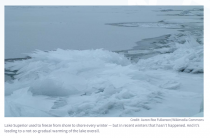
-------------
Thanks for your support over the years for Icecap - now going on 7 years with well over 50 million page hits. Thank you for your donations that helped us pay the bills. The account was down to $0.02 last I checked. So any help would be welcomed. We often have to subsidize the site maintenance (we needed high security because of a few hacking instances) ourselves and all out outside efforts are pro bono. We continue to battle the true deniers who are flailing away trying to explain why lack of warming is going on 20 years while sea level rises stop or slow and snow increases not decreases with colder not warmer winters. Some of their explanations are ludicrous. They have a lot to lose after gotten used to easy money from the $169B from governments and NGOs and foundations. They forgot how to do real science, real work, how to look at the data with an open mind. I never thought this could happen to the science I love.
The puppetmasters have orchestrated this hoax in the schools, in governments at all levels and the compliant left leaning media including the once reliable TWC. If we can’t stop them we will like Europe find out energy costs already hurting low and middle class becoming prohibitively high and hurting the people the government claims their care most about. There are many stories from here in the north this winter that should awaken people. We will post on those. But the public doesn’t yet blame the politicians who are hell bent on doing away with coal, natural gas, nuclear in favor of undependable and extremely costly wind and solar. Europe now recognizes their mistake in listening to the greens and are undoing them by furiously building coal and gas plants and stopping subsidies for renewables. Why can’t our politicians do their homework before following what their enviro friends push them to pursue - heavy subsidization of renewables with bug kickbacks to their cronies and supporters who manage (mismanage) them, and demonization of nuclear and fossil fuels.
“Two things are infinite: the universe and human stupidity; and I’m not sure about the universe.”
Albert Einstein
They have other motivations we will talk about in future posts.
By Joseph D’Aleo, CCM
Meteorological winter ended with a flourish in the north country with record temperatures and extreme wind chills. The winter in this region has ranked among the great winters historically including the three in the late 1970s, 1916/17-1917/18 and 1894/95. Reports are just beginning to dribble in and we’ll update you on the cold and after the next few weeks the snow records.
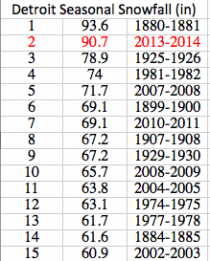
Enlarged
Detroit snowcover record came to an end at 77 days, beating out 1977/78 with 75.
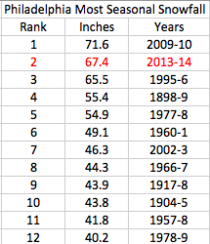
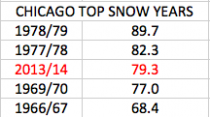
This is just the tip of the ‘iceberg’.
Persistent cold temperatures in the Midwest this winter have almost completely frozen over many of the Great Lakes. The Great Lakes Environmental Research Laboratory (GLERL) reported that 88 percent of the Great Lakes were frozen as of mid-February. The last time ice cover was even close to this extent was in 1996, when maximum seasonal ice cover was approximately 82 percent.
Percent ice cover on the Great Lakes on February 13, 2014. Shades of blue indicate ice concentration, with the darkest shade of blue indicating areas where 0 percent of the water’s surface is frozen, and white indicating areas where the water is entirely frozen over. Map by NOAA Climate.gov, based on data provided by the U.S. Naval Ice Center.
The map shows ice coverage on the Great Lakes on February 13. Shades of blue indicate ice concentration, with the darkest shade of blue indicating areas where 0-10 percent of the water’s surface is frozen and white indicating areas where the water is entirely frozen over. Lakes Superior, Erie, Huron, and St. Clair were 90-100 percent ice covered, while Lakes Michigan and Ontario were 82 percent and 43 percent ice covered, respectively. Overall, 88 percent of the Great Lakes were frozen on this date-the most extensive total ice coverage observed so far this winter.
Maximum ice cover on the lower lakes normally occurs between mid-February and end of February, while the maximum on the upper lakes normally occurs between the end of February and early March. According to the Midwest Regional Climate Center, average temperatures were below normal across the region during the second week of February. If cold temperatures persist, the MRCC reports, “it is possible that the Great Lakes could approach the record-setting year of 1979, which recorded 94.7 percent maximum ice coverage.”
But while ice cover and water levels are known to vary on the Great Lakes from year to year, scientists have observed an overall decrease in ice extent since records began in the early 1970s. From 1973 to 2010, annual ice coverage on the Great Lakes declined by 71 percent (relative to 1973).
Percent ice cover on the Great Lakes at winter maximum each year since 1973. The dashed line shows the long-term average of 51%. Prior to the mid-1990s, most years were above the long-term average; since then, most years have been below average. As of February 13, 2014, the lakes were 88% ice covered. Graph adapted by NOAA Climate.gov, from an original provided by The Great Lakes Environmental Research Lab.
According to the 2009 National Climate Assessment, higher temperatures could mean more evaporation from the upper Great Lakes and hence a likely reduction in some Great Lakes water levels. Lower water levels could have potential impacts on the major industries that depend upon the lake-hydropower generation, commercial shipping, and fishing-as well as recreational beaches and coastal ecosystems.
So far this winter, extensive ice cover has allowed access into previously inaccessible ice caves near Lake Superior and provided a safe landing spot for an airplane experiencing an emergency over Lake Huron. The effects of extensive ice cover could even last into the summer and fall, potentially contributing to cooler water temperatures. Since the ice must be melted first before the water below it can be warmed, the lakes could heat up slower although weather conditions and heat storage in the lakes will be contributing factors as well, according to an FAQ on the GLERL website. Lower water temperatures could also potentially reduce evaporation from the lakes this year, which could help drive water levels up.
Canadian Ice Service shows how much above normal the ice has been.
Guest opinion by David Hoffer
Carol, in your recent CNN opinion piece, the headline was “Why are we still debating climate change?”. The very first statement in the article that followed was “There is no debate”.
The answer to your question is actually right in your own article. I’ll get to that in a bit, please bear with me. I wanted to touch on your claim that there is no debate first. I’d like you to consider the following statement, which I provide with no intent of malice whatsoever, only as a means of making a point.
Carol Costello is stupid. There is no debate.
Now what would you think if you saw this in print, followed by a long explanation as to what is wrong with people who don’t agree, and a refusal to examine any facts related to the accusation? I imagine you’d be miffed. I imagine also that any examination of the facts would prove me wrong, I seriously doubt that such a statement would stand up to any fair debate of the matter. Which brings me to a question Carol:
If the facts supporting Climate Change are so obvious, should not debating the facts of the matter strengthen those facts? Just as you would be eager to prove that you are not, in fact, stupid, should you not be equally as eager to prove your opinion by engaging in factual debate?
While you ponder that, and keeping in mind that I did say the answer to your question is in your article and I would get to that, let’s examine the only fact upon which your argument rests, which is that there is a consensus among 97% of scientists. Well Carol, I read that study. Did you? I’m guessing not.
Carol, that study was done by Margaret Zimerman, who sent the survey to 10,257 Earth Scientists. Of those, 3,146 responded. Of those, Ms. Zimmerman excluded all but 77. That fact alone should have your journalistic instincts on high alert. But it gets worse. The two questions which lead to the 97% finding were:
Q1: “When compared with pre-1800s levels, do you think that mean global temperatures have generally risen, fallen, or remained relatively constant?” 76 of 79 (96.2%) answered “risen.”
Q2: “Do you think human activity is a significant contributing factor in changing mean global temperatures?” 75 of 77 (97.4%) answered “yes.”
The problem here Carol is that they should have gotten 100% to both questions. The earth has been warming since the Little Ice Age which was 400 years ago. So obviously the answer to the first question would be “risen” even if human influence was zero. As for the second question, you may be surprised to learn that all but a tiny fraction of skeptics agree that rising temperatures are, in part, due to human activity. You see Carol, the debate about climate change is not a simple matter of “yes” or “no”. It is much more nuanced than that. There are questions relating to order of magnitude of change, endangerment related to any change that does occur, and in regard to strategies of mitigation versus adaptation. That study did nothing to determine consensus opinion on any of the central matters of the climate debate. It is not only contrived, but nearly meaningless. But I digress.
You go on to quote studies categorizing the population. I said I’d show you the answer to your headline question in your own article. Well, here it is. Your article goes on to quote results from Anthony Leiserowitz, who categorizes the population as follows:
Alarmed (16%)
Concerned (27%)
Cautious (23%)
Disengaged (5%)
Doubtful (12%)
Dismissive (15%)
Well that hardly seems like a consensus. In fact you go on to claim that the Dismissives are a powerful, well funded, well organized lobby group who are muddying the debate. Well Carol, if the facts are so powerfully on one side of the debate, why begin your opinion piece by categorically insisting that there is no debate? If there is no debate, how is it that only 16% of the citizenry are alarmed? Why, by the definitions in your own article, do 82% of the people think that climate change is something that won’t, for various reasons, have a direct effect on their lives?
But most importantly Carol, if you want to change their minds, would not an open and honest debate of the facts be your most powerful weapon? Are you going to let me accuse you of being stupid, or would you like to prove me wrong?
Lastly Carol, you sum up your article on this statement:
“The good news is, those uninformed minority voices are being quieted by nature and by those who have powerful voices.”
Well Carol, on that second point, I will allow that you are correct. Powerful voices (like yours) are eager to stifle the debate. Oddly, your own article points out the importance of having one if you want the facts as you see them to prevail. Will you use your powerful voice to that end? Or shall we call you stupid, insist there is no debating the matter, and call it a day?
But more importantly Carol, the first part of your statement is wrong. It is a simple matter to see that when one looks at the data, all the predictions of the “consensus” science have failed. Arctic ice retreat has stopped, and Antarctic ice has hit record levels. On a global basis, hurricanes and tornadoes have declined in both frequency and severity. According to the temperature records kept by the “consensus” scientist themselves, the earth hasn’t warmed in close to two decades, despite ever rising levels of CO2. Nature in fact is taking sides in this debate, and not the side you seem to think.
Even the United Nations IPCC, which is consensus climate science central for the world, now admits in their recent report (IPCC AR5) that the climate models themselves are wrong. It is their expert opinion that sensitivity to CO2 lies well below the model estimates. What are the models based upon Carol, if not the science? And if the best scientists in the world, in their capacity as advisors to the United Nations and world governments alike, are collectively stating that the models and the science the models are built on are in doubt, does that not deserve public debate?
Even among the “consensus” scientists themselves Carol, there is now considerable doubt about the science. Does that not give you pause to reconsider your position?
By Dr. Larry Bell, reprinted with permission of author
Facts, as they say, are facts. On the other hand, untrue representations presented as facts are either uninformed, intentionally disingenuous, or a combination of the two. Secretary of State Kerry’s statements attacking those who challenge the existence of a human-caused climate crisis likely fall into the third category.
Speaking at a February 16 press conference in a U.S. Embassy-run American Center held at a shopping mall in Jakarta, Indonesia Kerry described climate change as the world’s “most fearsome weapon of mass destruction”. He also referred to those who don’t subscribe to that hell-in-a-hand basket global warming apocalypse as “Flat-Earthers”.
Kerry told the audience: “We should not allow a tiny minority of shoddy scientists and science and extreme ideologues to compete with scientific facts. The science is unequivocal, and those who refuse to believe it are simply burying their heads in the sand. We don’t have time for a meeting anywhere of the Flat Earth Society.”
First of all, let’s briefly review just a few real facts:
There has been no statistical global warming for the past 17 years...most of today’s high school students haven’t witnessed it in their lifetimes.
There is absolutely no credible scientific consensus that human activities, including fossil burning, are having a dangerous (or even measurable) influence on climate change...either for warming or cooling.
The climate crisis dogma-premised “sustainable energy” fetish has caused disastrous government policies in the U.S. and abroad, particularly in Europe where failures have produced economic distress.
Nations are abandoning the U.N.’s climate hype-promoted Kyoto carbon emission reduction commitments in droves as its Intergovernmental Panel on Climate Change struggles to explain why its model-based predictions have been spectacularly disproven by Mother Nature.
Climate changes without any help from us...has for millions of years...and as we can expect, always will...with Ice Ages occurring during about 90 percent of the time.
Kerry’s Very Original Talking Points Speech Writer
Perhaps the content and tone of Secretary Kerry’s pronouncements will strike some people as familiar, dating back to the U.N.’s 1992 Earth Summit in Rio de Janeiro aimed at ginning up Kyoto Protocol support. Speaking at the opening ceremony, its organizing chairman, Canadian billionaire Maurice Strong, said “Every bit of evidence I’ve seen persuades me that we are on a [climate] course leading to a tragedy.”
Bear in mind here that this “persuading evidence” appeared just 12 years after three and one-half decades of flat or cooling temperatures had persuaded many scientists to conclude that the next Ice Age was nigh. Lots of major news publications trumpeted this alarm in headline articles.
Strong has never left any doubt where he places greatest blame for global climate and environmental problems, stating that “The United States is clearly the greatest risk to the world’s ecological health”.
As he explained in the U.N.’s world Commission on Environment and Development (UNCED) August 28, 1991 report: “It is clear that the current lifestyles and consumption patterns of the affluent middle class involving high meat intake, consumption of large amounts of frozen and convenience foods, ownership of motor vehicles, small electric appliances, home and work place conditioning and suburban housing is not sustainable...A shift is necessary towards lifestyles less geared to environmentally-damaging consumption patterns.”
Maurice Strong - certainly no common run-of-the-mill billionaire - has an extremely interesting and active background. Early-on he and his wife, Hanne, an occultist, established a global headquarters in San Luis Valley, Colorado, for the New Age movement called “Baca”, after a mystic informed them it would become the center for a new planetary order which would evolve from the economic collapse and environmental catastrophes that would sweep the globe in the years to come.”
As a close associate of Secretary General Kofi Anan, Strong was appointed to chair the panel that created the U.N.’s Iraq office for its “Oil-For-Food” program. Introduced by the Clinton administration in 1995 under a U.N. Security Council Resolution, the program’s intended purpose was to allow Iraq to sell oil on the world market in exchange for food, medicine and other humanitarian needs of its needy citizens without allowing Saddam Hussein’s regime to boost its military capabilities. As it turned out, however, the program also provided lots of humanitarian aid to some very non-needy financial recipients, and was later ended after revelations of corruption hit the press.
One of those found guilty of attempting to bribe U.N. program officials overseeing the Oil-for-Food program was Tongsun Park, a South Korean businessman who had sublet office space from Maurice Strong. Coincidentally, it seems, Park also invested nearly $1 million paid from his Jordanian bank account in Strong’s family business...one which later went bankrupt.
During the scandal Strong declared no wrongdoing or involvement in Oil-for-Food, and was never charged. He then left the U.N. that year and moved to Beijing where his close friendships with top Chinese government leaders dated back to the Cultural Revolution under Mao Tse-tung.
But count on Maurice to come back Strong when there’s a good opportunity to cash in on fossil-fueled climate alarm, reentering through the green curtains of the anti-carbon scam stage as chairman of the China Carbon Corporation, and vice chairman of the Chicago Climate Exchange (CCX).
As I discussed in my February 11 column, passage of the international Kyoto Protocol plus proposed carbon cap-and-trade legislation in the U.S. promised a windfall profit bonanza for renewable energy subsidy seekers and their offset credit trading cronies. Al Gore’s famous and feverish 1988 congressional hearings trumpeting global warming danger, along with his frightening “An Inconvenient Truth” science fiction movie set the stage for a media thriller.
A less-publicized and more truly inconvenient truth at the time was that Gore and his partner David Blood, the former chief of Goldman Sachs Asset Management who held big stakes in CCX would have been huge winners if cap-and-trade hopes hadn’t been swept way in the 2010 mid-term election Republican House cleaning. Speaking before a 2007 Joint House hearing of the Energy Science Committee, Gore told members: “As soon as carbon has a price, you’re going to see a wave [of investment] in it...There will be unchained investment.”
Kerry’s Kyoto, Cap-and-Trade and Climate Confusion
John Kerry voted against carbon restrictions before he voted for them. After all, he was among those who unanimously passed a 1997 Byrd - Hagel resolution against the Kyoto treaty. Along with then-president Bill Clinton who recognized the peril of submitting it for Senate ratification, Kerry knew better than to publicly support a politically-unsavory treaty which the bill asserted “would result in serious harm to the economy of the United States”.
Then in 2010, Kerry and fellow Senator Joe Lieberman co-sponsored a failed attempt to pass a cap-and-trade end-run called the “American Power Act”. A more appropriate description, however, would have been “American power grab” since, in reality, it had little to do with developing our nation’s vast domestic fossil energy resources. Rather, it emphasized ways to mitigate the alleged effects of carbon-based energy upon climate and expand government bureaucracy by creating at least 60 expensive new agencies and projects.
The proposed act included a $7 billion annual “linked fee” added to gasoline prices to “improve U.S. transportation inefficiency”. The plan was to have producers and importers of gasoline and jet fuel purchase non-tradable carbon allowances paid according to a fixed price established by trading auction rates. While the language of the bill wasn’t actually referred to as a linked fee or tax, you probably wouldn’t recognize any difference when paying the added cost at the gas pump.
Another $2 billion in the bill was to be allocated per year for researching and developing effective carbon capture and see question method for coal plants...kind of like creating a GITMO for dangers posed by Kerry’s climate-ravaging carbon terrorist provocateurs. In addition, there was to be a multibillion dollar revenue stream for agriculture to finance a carbon offset program.
A Keystone Copout vs. Capstone Climate Legacy Conundrum
Secretary of State Kerry will serve as either the Obama administration’s designated scapegoat or environmental activist hero for the final decision whether to approve the Keystone XL pipeline. He’s also a high-profile banner-carrier on the front lines of the President’s religious war on climate change. Have no doubt that he realizes there’s a lot of green at risk for his party, not to mention his own future ambitions, if decisions don’t go with the greenies on both issues.
Much of that green will be depend upon appeasing priorities of a billionaire and climate activist named Tom Steyer who has indicated willingness to earmark $100 million or more to help put or keep congressional candidates who support his priorities. Steyer threatened in an open letter that Obama better reject Keystone… or else! It warned: “Given that none of the chief arguments being put forth by supporters of the pipeline remain standing, NextGen Action [his political action committee] is going to be working with our friends and allies who are opposed to the development of Keystone XL to intensify our efforts in communicating what is the right policy choice to your Administration.”
Leaving no doubt which side of the fence those friends and allies stood on, the letter said, “On June 20, in Washington D.C. we will announce a campaign that will specifically focus on communicating to those Americans across the country that supported your election in 2012.”
Since the Keystone pipeline crosses the U.S. border, the State Department under Kerry’s authority will (at least officially) have final say on permitting. And it’s not as if the project is being rushed through without careful attention to environmental safeguards. After a five-year wait, Keystone XL has met 57 specific pipeline safety standard requirements created by the State Department and the Department of Transportation’s Pipeline and Hazardous Materials Safety Administration (PHMSA). It passed all with flying colors, including acceptance by the State of Nebraska where it passes over the sensitive Ogallala Aquifer.
Last January another study concluded that the pipeline would have minimal impact on climate...not because there’s no scientific evidence that any pipeline would...but rather because the Canadian oil sands will be developed anyway. (Isn’t it remarkable that an expensive study was needed to figure that out?) Even if the pipeline isn’t built, Canada certainly won’t leave those resources in the ground. Instead, they will be sent to an energy-eager China.
Speaking of fossil energy-thirsty China, Kerry has deftly negotiated a “unique cooperative effort” with the country to combat climate change. Speaking at a press conference at a Beijing car-making factory he said: “I’m very pleased to report today that the leaders of China have agreed to join us in a mutual effort - China and the United States will put extra effort into exchanging information and discussing policies that will help both of us to be able to develop and lead on the standards that need to be announced next year in the global climate change agreement.”
Gosh, I bet China will have some really great ideas to share with him on how to end a millions-of-years history of climate change. Meanwhile, they might also direct attention to attacking real air pollution, not harmless and essential plant-nourishing CO2 that all carbon-based life including environmental activists and billionaires depends upon.
And maybe while we’re exchanging ideas with China about jointly addressing any climatological weapon of mass destruction threat, they can give us a hand with some other global dangers as well. China’s assistance in arresting WMD terrorism threats posed by Iran, North Korea and Syria immediately come to mind as examples of climate changes in global security cooperation we can all wish for.
February 7th, 2014 by Roy W. Spencer, Ph. D.
I’m seeing a lot of wrangling over the recent (15+ year) pause in global average warming...when did it start, is it a full pause, shouldn’t we be taking the longer view, etc.
These are all interesting exercises, but they miss the most important point: the climate models that governments base policy decisions on have failed miserably.
I’ve updated our comparison of 90 climate models versus observations for global average surface temperatures through 2013, and we still see that >95% of the models have over-forecast the warming trend since 1979, whether we use their own surface temperature dataset (HadCRUT4), or our satellite dataset of lower tropospheric temperatures (UAH):
_thumb.png)
CMIP5-90-models-global-Tsfc-vs-obs-thru-2013 Enlarged
Whether humans are the cause of 100% of the observed warming or not, the conclusion is that global warming isn’t as bad as was predicted. That should have major policy implications...assuming policy is still informed by facts more than emotions and political aspirations.
And if humans are the cause of only, say, 50% of the warming (e.g. our published paper), then there is even less reason to force expensive and prosperity-destroying energy policies down our throats.
I am growing weary of the variety of emotional, misleading, and policy-useless statements like “most warming since the 1950s is human caused” or “97% of climate scientists agree humans are contributing to warming”, neither of which leads to the conclusion we need to substantially increase energy prices and freeze and starve more poor people to death for the greater good.
Yet, that is the direction we are heading.
And even if the extra energy is being stored in the deep ocean (if you have faith in long-term measured warming trends of thousandths or hundredths of a degree), I say “great!”. Because that extra heat is in the form of a tiny temperature change spread throughout an unimaginably large heat sink, which can never have an appreciable effect on future surface climate.
If the deep ocean ends up averaging 4.1 deg. C, rather than 4.0 deg. C, it won’t really matter.
-------------
El Nino monitoring system in failure mode
Nature
An ocean-monitoring system that extends across the tropical Pacific is collapsing, depriving scientists of data on a region that influences global weather and climate trends.
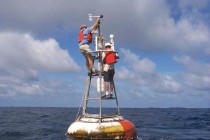
Nearly half of the moored buoys in the Tropical Atmosphere Ocean (TAO) array have failed in the past two years, crippling an early-warning system for the warming and cooling events in the eastern equatorial Pacific, known respectively as El Nino and La Nina. Scientists are now collecting data from just 40% of the array.
“It’s the most important climate phenomenon on the planet, and we have blinded ourselves to it by not maintaining this array,” says Michael McPhaden, a senior scientist at the US National Oceanic and Atmospheric Administration (NOAA) in Seattle, Washington. McPhaden headed the TAO project before it was transferred out of NOAA’s research arm and into the agency’s National Weather Service in 2005.
The network was developed over the course of a decade following the massive El Nino of 1982‒83. NOAA maintains some 55 buoys across the eastern and central Pacific that monitor weather conditions as well as water temperatures down to 500 metres. Working in concert, the Japan Agency for Marine-Earth Science and Technology (JAMSTEC) maintains another dozen buoys in the western tropical Pacific. Combined, the monitoring system has become a cornerstone for seasonal weather forecasting given the tropical Pacific’s influence on broader weather patterns.

The TAO array monitors conditions in the tropical Pacific Ocean. Turquoise dots represent US buoys, while yellow dots show Japanese buoys.
Expand
An array adrift
The array’s troubles began in 2012, when budget cuts pushed NOAA to retire a ship dedicated to performing the annual servicing that keeps the TAO buoys in working order. According to McPhaden, NOAA’s annual budget for the project stood at about US$10 million to $12 million before 2012 - a figure that included around $6 million to cover the dedicated ship. In fiscal year 2013, the agency spent $2 million to $3 million to charter boats for maintenance runs, but McPhaden says that these operations have not been enough to keep the system going. Meanwhile, although JAMSTEC has thus far kept its portion of the array up and running, it too is under budgetary pressure.
A cadre of researchers from around the world will meet next week at the Scripps Institution of Oceanography in La Jolla, California, to discuss possible solutions. NOAA has indicated that the agency will put additional resources into the programme this coming year, but few expect that this will be enough to fully restore the array.
The amount of data returned by the TAO array has plummeted as buoys have gone offline.
“The array really revolutionized our science, and to let it deteriorate is such a waste of the investment the Americans have made over the past 30 years” says Wenju Cai, a climate modeller at the Commonwealth Scientific and Industrial Research Organization in Aspendale, Australia. Cai was the lead author on a recent paper1 with McPhaden and others projecting that global warming could double the frequency of extreme El Nino events - such as those in 1982‒83 and 1997‒98, each of which caused epic damage around the globe. ICECAP COMMENT: Clear nonsense and/or wishful thinking> La Ninas will continue to dominate and El Ninos will be weak and short lived as long as the PDO is cold.
Buoys are not the only instruments monitoring the equatorial Pacific. Scientists also supplement data from the TAO array with measurements of both sea surface temperature collected via satellite and ocean temperature collected by the global network of free-floating buoys known as Argo, which dive and report data every ten days. But satellites cannot see beneath the ocean surface, and Argo floats cannot provide the kind of real-time measurements at specific locations that come from the array of moored buoys.
In addition to supporting climate research, the TAO array also provides basic data for seasonal weather forecasts issued by various government agencies around the world. The impact of the data loss on current predictions remains unclear, in part because the tropical Pacific has been in a neutral state since the buoy system began to fail. But there are signs that seasonal climate models are beginning to suffer from the lack of data, McPhaden says, and it would be a shame if another major El Nino were to arrive while the system is crippled.
“In my opinion, NOAA dropped the ball on an incredible programme for climate research and weather forecasting,"McPhaden says. “And now they are trying to put Humpty Dumpty back together again.”
Note: See also ”Will The Overselling Of Global Warming Lead To A New Scientific Dark Age?” in Forbes by Dr. Pat Michaels.
Will the overselling of climate change lead to a new scientific dark age? That’s the question being posed in the latest issue of an Australian literary journal, Quadrant, by Garth Paltridge, one of the world’s most respected atmospheric scientists.
Paltridge was a Chief Research Scientist with the Commonwealth Scientific and Industrial Research Organization (CSIRO). The latter is Australia’s equivalent of the National Science Foundation, our massive Federal Laboratory network, and all the governmental agency science branches rolled into one.
Paltridge lays out the well-known uncertainties in climate forecasting. These include our inability to properly simulate clouds that are anything like what we see in the real world, the embarrassing lack of average surface warming now in its 17th year, and the fumbling (and contradictory) attempts to explain it away.
--------
By Marita Noon, Townhall.com
The current cold covering a large portion of the country has, once again, brought out the climate change alarmists with claims of “serious threat.”
Due to his respected position, as climate scientist at the University of California, San Diego Institution of Oceanography, Richard C.J. Somerville’s recent “Cold comfort” column was published in newspapers throughout the country.
In it, he grouses that the public doesn’t take the “consequences” of climate change seriously - pointing out that they are “here and now.” He cites: “only 54 percent of the public sees it as a global threat to their countries and only 40 percent of Americans do.”
Somerville suggests: “people either are scientifically illiterate or reject science when it conflicts with their core values or religious convictions.” He posits: “the medical profession and communication experts may have much to teach those climate scientists” because “Priming patients to appreciate the value of medical diagnostic tests has been shown to make them more likely to take these tests and then act on the results.”
What Somerville misses in the analogy is that the data back up the medical case. For example, getting a mammogram catches breast cancer early and increases survival rates. The data have shown that medical science is correct.
On the contrary, the data don’t support the claims made by climate scientists- but they just keep making them. Apparently they believe the “big lie” propaganda technique used so effectively by Adolf Hitler.
In Somerville’s column, he offers several familiar, easily disproven statements:
* “Low-lying areas are threatened by sea-level rise” which will result in “millions of environmental refugees” and
* “Major threats to agricultural productivity as rainfall patterns change and as heat waves, floods, droughts and other weather extremes worsen.”
Because my expertise is in communications not climate, I reached out to someone who could help me: Robert Endlich - who does in fact have both the education and experience. Endlich, who served as a USAF weather officer for 21 years and holds a BS in geology and an MS in meteorology, offered me pages of data and documentation, which I’ve summarized for my readers.
Environmental Refugees
If the threat of “environmental refugees” sounds familiar, it should. The 2005 UN Environmental Program forecast 50 million to 100 million climate refugees. A UN report by Norman Myers: “Environmental Refugees, an Emergent Security Issue,” presented at the 13th Economic Forum, in Prague, May 23-27, 2005, predicted: “The environmental refugees total could well double between 1995 and 2010,” and “When global warming takes hold, there could be as many as 200 million people overtaken by disruptions of monsoon systems and other rainfall regimes, by droughts of unprecedented severity and duration, and by sea-level rise and coastal flooding.” His report was accompanied by a map, indicating areas to be impacted by sea-level rise.
In early 2011, Gavin Atkins asked: “What happened to the climate refugees?” In his Asian Correspondent post, he used census records to show that the populations in the low-lying areas predicted to “flee a range of disasters including sea level rise” had actually grown - including no fewer than the top six of the very fastest growing cities in China.
Based on both in-person observation and historic evidence from Western Europe, Endlich has made a study of sea level rise. Citing geological features such as stream meanders upstream of Pisa on the Arno River and new shorelines on the coast of the Ligurian Sea, and history, he told me: “What may be news to many is that there is widespread evidence in the Mediterranean Basin and the English Channel coast that sea levels in Roman and Medieval periods were significantly higher than at present. The Roman port of Ostia Antica, the port at Ephesus, now in Turkey, and Pisa have histories showing the Mediterranean Seas significantly higher than today’s sea levels.”
Endlich continued: “In 1066, William the Conqueror defeated King Harold at the Battle of Hastings. Less well-known is when William landed, he first occupied an old Roman fort now known as Pevensey Castle, which at the time was located on a small island in a harbor on England’s south coast. A drawbridge connected castle to mainland. Pevensey is infamous because unfortunate prisoners were thrown out this “Sea Gate,” so that their bodies would be washed away by the tide. Pevensey Castle is now a mile from the coast - further proof of higher sea levels fewer than 1000 years ago.”
The glacial-interglacial temperature data from the past 400,000 years shows each of the previous four interglacials significantly warmer than at present. In fact, a careful analysis of the ice cores from East Antarctica, published as a letter in Nature, shows that maximum temperatures from previous interglacials were at least 6C/10F warmer than present-day temperatures, with CO2 values then about 280 PPM, and today’s values near 400 PPM. Leaving one to ask: “if CO2 is such a strong cause of warming, why is it so cold today?”
Worsening weather extremes
Somerville stated: “The consequences include major threats to agricultural productivity as rainfall patterns change and as heat waves, floods, droughts, and other weather extremes worsen.” Endlich shared the following with me:
Heat Waves: Dr. Judith Curry, Chair of the School of Earth and Atmospheric Sciences at the Georgia Institute of Technology offered Senate testimony on January 16, 2014. She showed an analysis of 982 stations from the U.S. Historical Climate Network for the 48 continental states with more than 80 years of record. The data show a strong peak of record maximum daily temperatures occurred in the 1930s, with no increasing trend in the post-WWII years when CO2 started its modern increase.
Of the 50 states, the number of state maximum record temperatures obtained from NOAA’s National Climate Data Center, by decade, shows that in the 1930s, 23 states set their all-time high temperatures, by far the largest number of such record highs. There has not been a single state record maximum set in the 21st Century.
Droughts: The most-often used indicator of drought is the Palmer Drought Severity Index. Curry’s testimony included a PDSI chart, showing the most severe droughts in the 102-year record 1910-2012, were in the 1930s and a lesser maximum in the 1950s. Data show no indication that drought severity has increased as CO2 has increased.
Floods: Dr. Roger Pielke, Jr., from the University of Colorado, testified to the Senate EPW Committee on July 18, 2013. With respect to floods, he provided data from the US Geological Survey, which show in the U.S., floods have not increased in frequency or intensity since at least 1950, and that flood losses, as a percentage of GDP have dropped by about 75% since 1940, based on data from NOAA’s Hydrologic Information Center.
Somerville says that increasing CO2 will harm plant productivity, but the opposite is true. First, realize that both plants and animals, including humans, are carbon-based life forms. With increasing CO2, there is an incredible array of beneficial effects spelled out in the book, The Many Benefits of Atmospheric CO2 Enrichment, by Craig Idso and Sherman Idso. The benefits include: increasing water-use efficiency; increasing biomass in roots, stems, flowers and nectar; larger seeds; avoiding human starvation and plant and animal extinctions; stimulating early plant growth; and resistance to plant diseases. The carbohydrates we consume when we eat are derived directly from CO2 in the atmosphere; carbohydrates are the source of the energy we need to survive and thrive.
Climate scientists, such as Somerville, do have something to learn from the medical profession: if you want people to heed your warnings, they need to be backed up by the data.
Somerville’s climate refugees cannot be found. In the recent past, interglacial periods were at least 6C/10F warmer than the present with a lot less CO2 in the air; and the Minoan, Roman and Medieval Warm periods were significantly warmer than at present. By historic accounts, sea levels were many feet higher as recently as 1066 and 1300 AD. His claims of heat waves, floods, drought and agricultural disruption are easily disproven by looking at real-world data.
Somerville’s argument points out: “climate change does involve serious threats.” The serious threat is the Obama/Podesta partnership pushing the executive order pen to punish people with new policies that kill jobs and increase energy costs all in the name of saving the planet.
I recall when Jerome Namias, a real scientist with no political agenda was Director of Scripps and it was a respectable institution. Jerome would never make claims that were not well founded in data. Somerville lives in a virtual world of model forecast data. Real data is never really considered.
By Craig D. Idso, Ph.D. SPPI Blog
In his State of the Union address, President Obama advocated an energy policy aimed at reducing emissions of carbon dioxide (CO2), which he claims are causing catastrophic changes to the earth’s climate and “harming western communities.” In his policy prescription, the president advocates a combination of increased regulation of the energy and transportation industries and more government spending on research designed to bring low-carbon-emitting sources of energy, i.e., so-called renewables, to market. He considers those actions to be the only viable options “leading to a cleaner, safer planet.”
But the president’s concerns for the planet are based upon flawed and speculative science; and his policy prescription is a recipe for failure.
With respect to the science, Obama conveniently fails to disclose the fact that literally thousands of scientific studies have produced findings that run counter to his view of future climate. As just one example, and a damning one at that, all of the computer models upon which his vision is based failed to predict the current plateau in global temperature that has continued for the past 16 years. That the earth has not warmed significantly during this period, despite an 8 percent increase in atmospheric CO2, is a major indictment of the models’ credibility in predicting future climate, as well as the president’s assertion that debate on this topic is “settled.”
Numerous other problems with Obama’s model-based view of future climate have been filling up the pages of peer-reviewed science journals for many years now, as evidenced by the recent work of the Nongovernmental International Panel on Climate Change, which published a 1,000-page report in September highlighting a large and well-substantiated alternative viewpoint that contends that rising atmospheric CO2 emissions will have a much smaller, if not negligible, impact on future climate, while generating several biospheric benefits.
Concerning these benefits, atmospheric CO2 is the building block of plant life. It is used by earth’s plants in the process of photosynthesis to construct their tissues and grow. And as has been conclusively demonstrated in numerous scientific studies, the more CO2 we put into the air, the better plants grow. Among other findings, they produce greater amounts of biomass, become more efficient at using water, and are better able to cope with environmental stresses such as pollution and high temperatures.
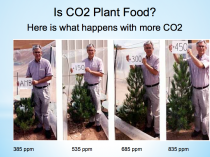
The implications of these benefits are enormous. One recent study calculated that over the 50-year period ending in 2001, the direct monetary benefits conferred by the atmospheric CO2 enrichment of the Industrial Revolution on global crop production amounted to a staggering $3.2 trillion. And projecting this positive externality forward in time reveals it will likely bestow an additional $9.8 trillion in crop production benefits between now and 2050.
By ignoring these realities, Obama’s policy prescription is found to be erroneous. The taxation or regulation of CO2 emissions is an unnecessary and detrimental policy option that should be shunned. Why would any government advocate to increase regulations and raise energy prices based on flawed computer model projections of climate change that will never come to pass? Why would any government advance policy that seeks to destroy jobs, rather than to promote them? Why, in fact, would they actually “bite the hand that feeds them?”
We live in a time when half the global population experiences some sort of limitation in their access to energy, energy that is needed for the most basic of human needs, including the production of clean water, warmth, and light. One-third of those thus impacted are children. An even greater portion finds its ranks among the poor.
As a society, it is time to recognize and embrace the truth. Carbon dioxide is not a pollutant. Its increasing concentration only minimally affects earth’s climate, while it offers tremendous benefits to the biosphere. Efforts to regulate and reduce CO2 emissions will hurt far more than they will help.
Idso is lead editor and chief scientist for the Nongovernmental International Panel on Climate Change





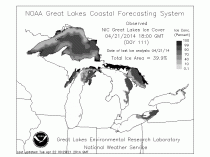

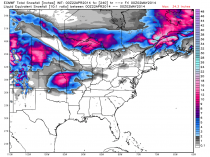
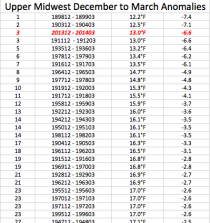
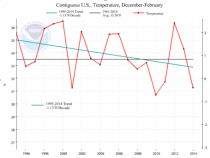
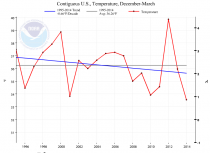
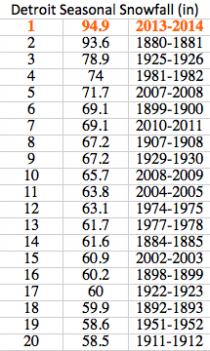
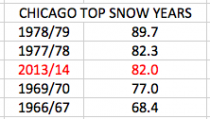
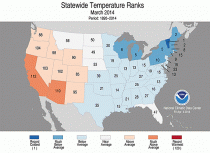

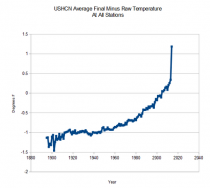
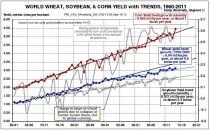
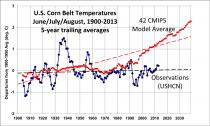
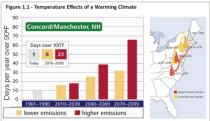
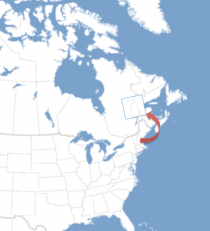
_thumb.png)
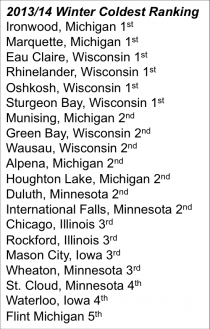
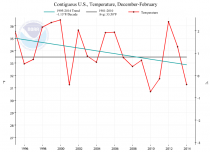
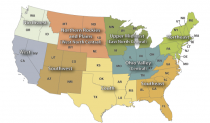
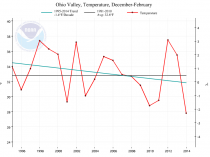
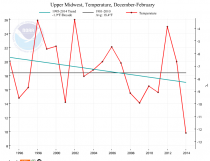
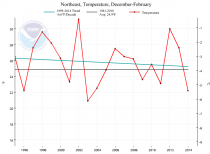
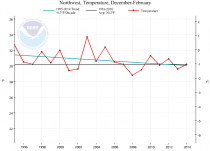
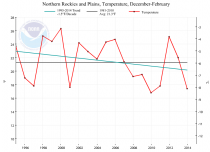
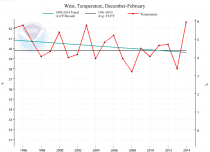
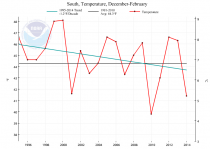
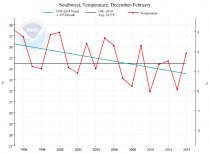
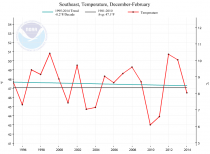
_thumb.png)
